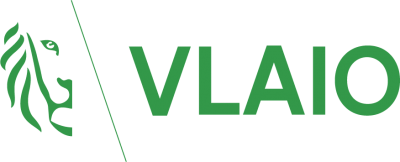Topics
We organise our actions in six thematic & strategic agendas:
Strategic Agendas:
Bio-economy
Circular Construction
Chemicals/Plastics
Manufacturing Industry
Food Chain
Water Cycles
Seven leverages provide additional support:
Leverage effects:
Lever Policy Instruments
Lever Circular Procurement
Lever Communication
Lever Innovation & Entrepreneurship
Lever Financing
Lever Jobs & Skills
Lever Research
What, why and how?
Why are we pursuing a circular economy?
Future visions 2050
How do we see our circular future?
About our management
Who steers what at Flanders Circular?
Erasable inks for circular packaging films
Packaging printed differently for less loss of value in recycling
A significant proportion of foil packaging, such as foil packaging of pallets or the multipacks of beverage containers, is printed. However, such printing causes a decrease in the value of the film when recycled because of the mix of colours.
Banning printing is difficult because many producers use the packaging for marketing purposes. Attempts have also been made to de-ink plastic packaging, starting from existing inks and printing processes, but this technology proved very expensive in practice and also often disrupts the recycling process.
Initially, Valipac wanted to create a completely new printing technology within this project together with an ink producer, a packaging manufacturer, a packer, a recycler and a waste collector that would make de-inking feasible. However, that path was not economically viable, and in the meantime it turned out that existing de-inking techniques were getting better and more cost-effective.
Therefore, we gave the project a different twist and started investigating how much printing (percentage of surface area) is acceptable in order to be able to use the produced recyclate for similar film packaging, and from when that is no longer the case. We intend to use this information later, among other things, when drawing up design-for-recycling guidelines.
Valipac
Partners Morssinkhof-Rymoplast bv, Oerlemans Packaging bv, Suez, TOYO Ink ARETS, Wienerberger, Fost Plus vzw, Aldoplastic Gmbh
Sectors
Themes
Organisations
Website
MOST IMPORTANT
RESULTS
- Combining unprinted films with a printed banding allows us to reconcile marketing with sustainability. The film is recycled into new transparent film, while the banding is recycled into other high-quality products that do not require transparency.
- We could demonstrate that even with printed films and foils, we can still make transparent films, provided the printing is limited to about 10% of the total surface area. This corresponds to a 90/10-bale quality.
- We have shown that 80/20-bales can also be processed into high-quality finished products that meet all physical requirements. However, they are less transparent, but in most applications one can ask whether this full transparency is really necessary.
MOST IMPORTANT
LESSONS LEARNED
- Demonstration projects like ours have an important example role for knowledge dissemination. Bad experiences with some packaging or processes in the past created general truths that are not (anymore) correct in practice. Science and technologies have evolved a lot.
- Collaboration is indispensable. Some of the pieces of the puzzle were known at the start of the project. However, it is thanks to the good cooperation of various partners across the chain that the pieces of the puzzle were put together and solutions were found.
- Technological advances sometimes ran faster than the operation of this project. At the start of the project, de-inking plastic films seemed a pipe dream. Meanwhile, the European industry is betting heavily on plastic recycling and there are several installations (under construction) for de-inking.
- Raising awareness that printing should be done differently is a first step. Source sorting is the second important step to close the chain, as is post-sorting to enable more cost-efficient processing. Furthermore, producers and users need to realise that recycled films are virtually equivalent to virgin films.
WHAT DOES
THE FUTURE HOLD?
We did not achieve the initial goal of the demonstration project. We could not develop an ink system that can be removed in any standard recycling process. We did learn that there are inks that pose fewer problems (smoke generation, thermal decomposition ...). However, those are expensive and not widespread in the industry. The industry should try to further scale up production of those inks so that they drop to an acceptable price level.
However, the project was successful as we found several alternative solutions to the problem.
The big challenge remains the large-scale roll-out of plants that can de-ink plastic films. Meanwhile, the recycling industry is starting to see the potential of de-inking and investments are being made that allow it to produce decoloured recyclate.
Another challenge remains the variety of ink systems. A number of inks are known to be difficult to dispose of. In an ideal world, the use of those inks would eventually phase out.
















